A piano bar turned Zagat-rated restaurant. An antebellum underground vault where Walt Whitman cross-dressed, now collapsed. An after-hours sex club, now a high-priced brunch spot. A two-floor dance club complete with onstage showers for the dancers, now a real estate office.
New York City sure can change. As Dorothy once quipped, "People come and go so quickly here."
I'm a big New York City history buff, but my favorite kind of local history usually involves the stories that don't get memorialized on historical markers. Bette Midler's legendary string of performances at the Continental Baths with Barry Manilow accompanying her -- amazing! Learning that the Mafia operated most of the gay bars in the '50s and '60s in New York City and why -- mind-blowing! Having the cruising scene at a Greenwich Village automat explained, not to mention learning what an automat was -- bewildering! These are oral histories usually shared over a happy hour drink with a, shall we say, more experienced New Yorker than myself. Whether by firsthand account ("We used to climb up on the High Line when it was still abandoned and party long after the club closed") or by community lore passed down so continuously it bordered on urban legend -- "You know, just before the Stonewall riots started Judy Garland died. It put everyone on edge" -- these stories range from trivial tales of nightlife to inspiring stories of brave New Yorkers forging community in the face of unimaginable, especially for someone my age, adversity. I wanted to hear more of them.
There are a few informative books that aim to document the changing social landscapes of New York's gay nightlife spots and the effect these spaces had on both civil rights in America and mainstream arts and culture. George Chauncey's Gay New York and Charles Kaiser's The Gay Metropolis come to mind, but for the most part, histories of LGBT nightlife are relegated to something like the comments section of a DataLounge thread. How could there be more space for LGBT New Yorkers and their allies to share stories about where they have found love, community, a good time, or if really lucky, all three?
And so "Gay Bars That Are Gone" was born: a free guided community-led walk about sharing stories from gay bars gone by. This year was the second that I hosted the walk as part of the international Jane's Walk festival organized by The Municipal Art Society of New York, and this year I was joined by Kyle Supley, an avid preservationist and creator of the forthcoming web series Out There! We weren't sure how many people would show up for a two hour journey of closed gay bars, but by the time the walk started over 80 people of all ages and reasons for coming were signing their names to a sign-in sheet adhered to a Best Little Whorehouse in Texas record cover acting as a clipboard and waiting for the walk to begin.
Kyle got everyone's attention. I shouted to be heard, "Tonight we celebrate bars, clubs, piano bars, discos, drag shows that are no longer with us but live on through memory in one way or another. The places we'll see today are important because they offered a space for a community to gather that was excluded almost everywhere else."

I clarified that this was a community-led walk -- not a tour. Kyle and I encouraged everyone to share personal stories and add to the conversation to build a collective memory of gay bars that have shut their doors. To underscore the importance of these spaces, we "guerilla landmarked" the bars spotlighted on the walk route. Absolutely no one on the New York City Landmarks Commission had given us the authority, but armed with a stencil that read "GAY BAR WAS HERE" a member of the walking crowd marked the sidewalk with the bright chalk at each stop. Much more colorful than a bronze plaque.
Along the walk, which wound its way through Chelsea and Greenwich Village, we tried to cover the many types of LGBT spaces: dance clubs, dive bars, piano bars, sex clubs, after-hours restaurants, and tearooms. We heard about the places where disco was born, where Barbra Streisand made her nightclub debut, where gay New Yorkers protested prejudice long before Stonewall, and talked about the toll the AIDS crisis took on the city. Along the way, it was easy to hear "You're forgetting the International Stud and Twelve West!" and "I can't believe we walked past the Mineshaft" to which Kyle and I jokingly reminded folks this walk was "by no means comprehensive or chronological, but it was free." Besides the sheer demand of places to see, what I quickly realized was how few opportunities people have to formally remember and discuss these spaces. Apparent too was the lack of opportunities for gays across generations (and ironically, outside of a bar setting) to learn from each other and pass down memories like so many of our straight neighbors have historically done with much for opportunity and ease.
Being a local business in New York City is hard enough now, especially considering with the city's rising rents and increasing penchant for national retailers. Owners of gay bars are battling even more fronts: the increasing use of mobile apps for means of connection instead of a barstool and, incredibly, the growing political acceptance of the LGBT community. The fewer places gays are excluded from arguably decreases the demand for places that are entirely gay-inclusive. The struggle for the gay bar is real, but this pretty simple walk ended up being a meaningful spotlight to showcase how important some of the spaces were and still are. The importance of LGBT spaces has only been heightened by the tragedy in Orlando, where 49 people were killed inside Pulse, a gay nightclub.
As we celebrate LGBT historic preservation wins like President Obama naming Stonewall a National Monument and Julius' -- site of the Mattachine Society's "sip-in" protest -- being nominated for landmark status, it's important to keep the pressure on elected officials to protect more LGBT historic sites formally. Important too is encouraging New Yorkers to memorialize these spaces informally as well: walking, writing, talking -- it all works! In the meantime, whether it be as historically significant as say Stonewall, culturally iconic as someplace like Studio 54 or simply a corner dive bar that shows RuPaul's Drag Race on Mondays, support your local gay bar!
"Gay Bars That Are Gone" went through Chelsea and Greenwhich Village in New York City. We could have easily covered several many more neighborhoods and several more hours.
MICHAEL RYAN is a former city organizer for Jane's Walk NYC -- named for urban planner Jane Jacobs -- and one of the creators of the "Gay Bars That Are Gone" walking tour. He lives in New York.








































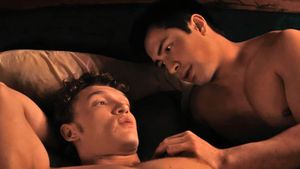



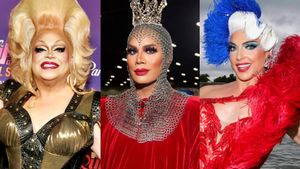






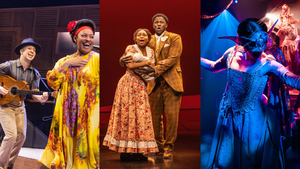




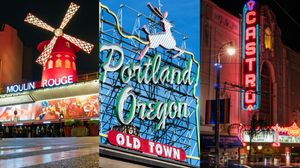

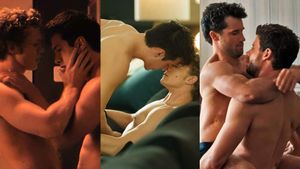


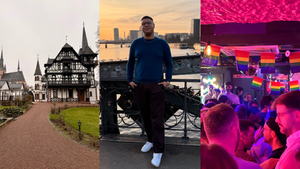


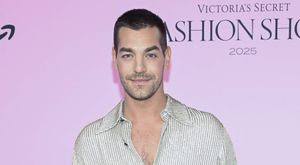




Charlie Kirk DID say stoning gay people was the 'perfect law' — and these other heinous quotes